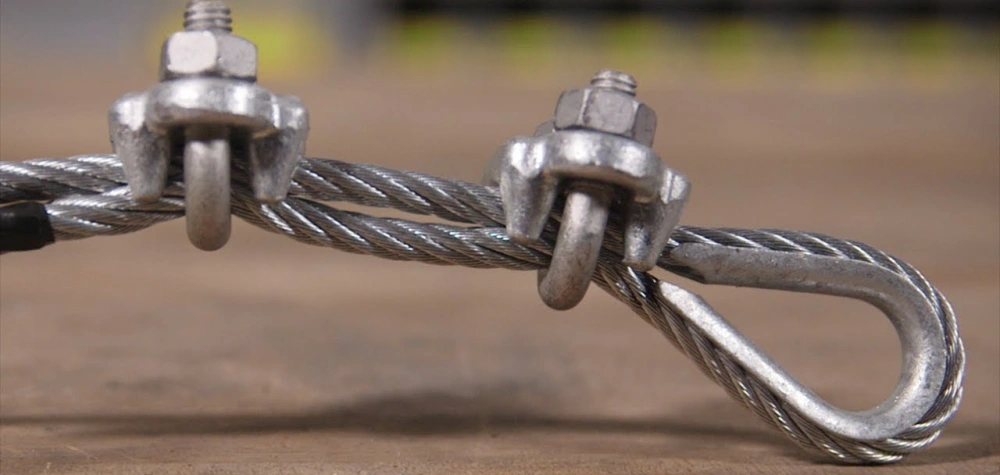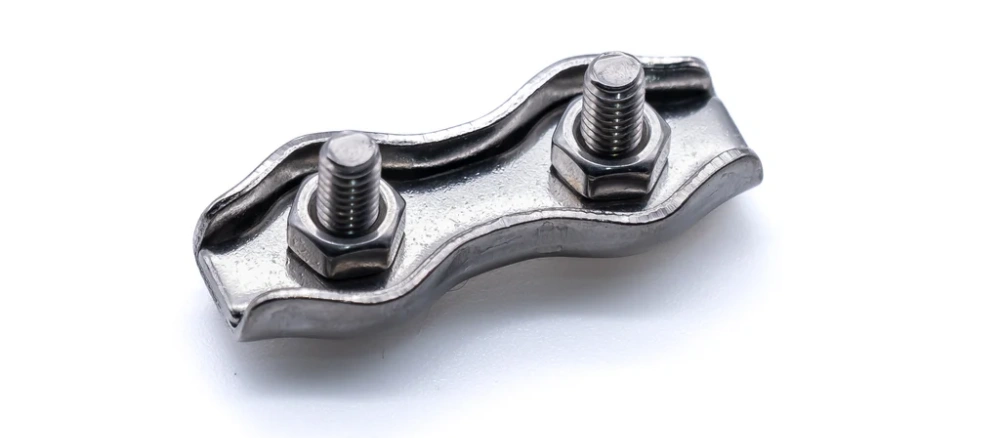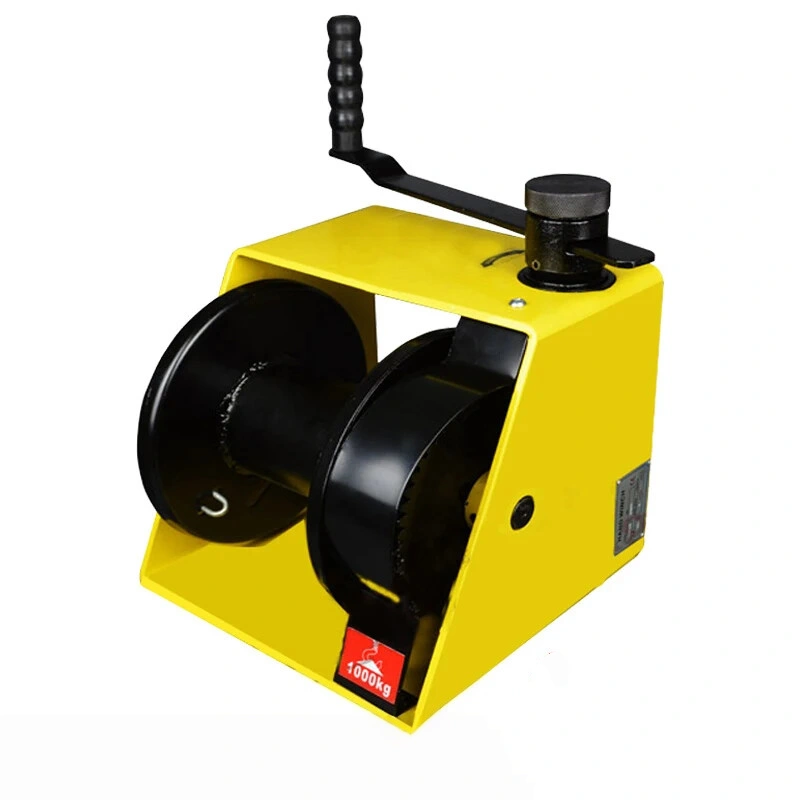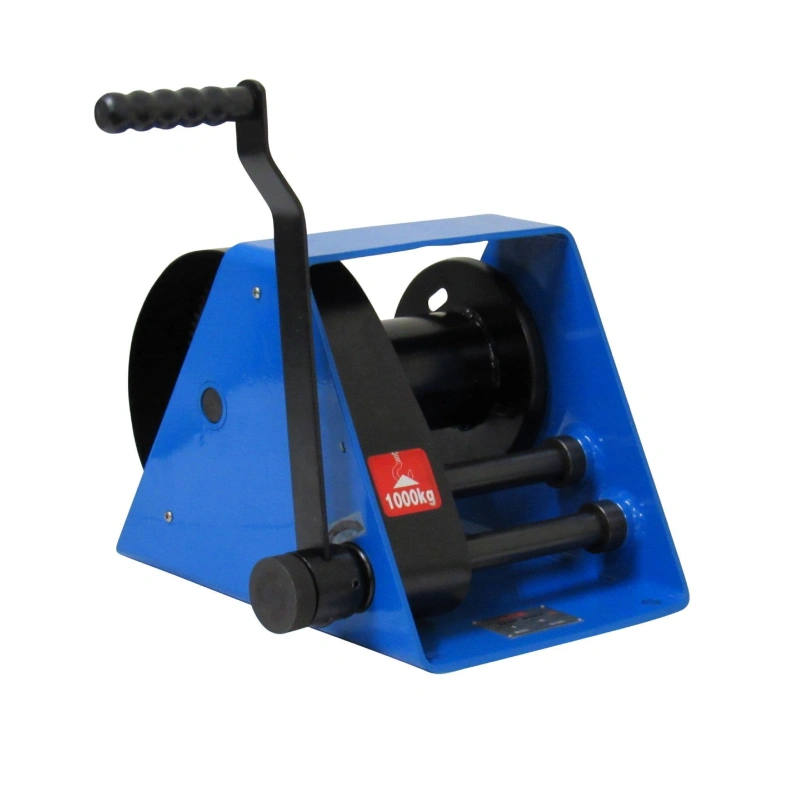Wire rope clips work by clamping down on the ends of a wire rope, locking them firmly in place. You use these handy devices to create strong loops, secure rope ends, and stop any unwanted slipping.
If you’re wondering how wire rope clips work, the process is straightforward: when you need a reliable connection, you simply fit the clip over the rope and tighten the nuts. This step-by-step process gives you a secure grip that holds up under pressure.
If you want a practical, no-nonsense way to handle wire ropes, these clips make your job easier.
Key Takeaways
Wire rope clips create strong loops and secure rope ends, preventing slippage during use.
Proper installation is crucial; always place the saddle on the live end and use at least three clips for secure connections.
Regularly inspect and re-tighten wire rope clips to ensure safety and extend their lifespan.
Choose the right type and size of wire rope clip based on your specific application and environmental conditions.
Avoid common mistakes like incorrect placement and insufficient torque to maintain a reliable grip.
What Are Wire Rope Clips?

Key Parts and Design
When you work with wire rope, you need reliable wire rope hardware to keep everything secure. Wire rope clips play a crucial role in this process. Each clip consists of three main parts that work together to hold the wire rope in place. You will find these components in most standard designs:
Component | Description |
|---|---|
Saddle | The part that sits on the wire rope to secure it. |
U-bolt | The bolt that wraps around the wire rope and holds the saddle in place. |
Hex nuts | Used to secure the U-bolt in position, ensuring a tight fit. |
You place the saddle on the live end of the wire rope, then fit the U-bolt over the dead end. Tightening the hex nuts locks the clip in place. The design of the clip ensures even pressure on the wire rope, which helps prevent crushing or damaging the strands.
The material and design of wire rope clips also affect their load-bearing capacity. For example:
The Working Load Limit (WLL) depends on the Minimum Breaking Strength (MBS) divided by a design factor, usually 5:1 for general-purpose slings.
A low D/d ratio can cause internal friction and crushing, reducing the wire rope’s strength by up to 50%.
The design factor considers dynamic loading, wear, fatigue, and sudden conditions, all of which impact the clip’s performance.
Choosing the right wire rope hardware ensures your wire rope stays strong and safe during use.
Main Uses in Rigging
You will use wire rope clips in many rigging tasks. These clips help you create secure connections and support heavy loads. Here are some of the main uses:
Creating load-bearing eyes at the end of wire ropes
Sustaining overhead loads
Applications such as guy lines, support lines, and scaffolding
Wire rope clips come in several types, each suited for different jobs. The table below shows common applications for each type:
Type of Wire Rope Clip | Common Applications |
|---|---|
U-Bolt Wire Rope Clips | Construction sites, Lifting and rigging, Marine applications |
Double Loop Wire Rope Clips | Cable stays for bridges, Tensioning in structural applications, Heavy lifting scenarios |
Plated Wire Rope Clips | Marine environments, Chemical plants, Outdoor rigging operations |
Screw Pin Wire Rope Clips | Temporary installations, Welding and fabrication, Rigging for events |
Specialized Wire Rope Clips | Aerospace applications, Heavy-duty construction, Mining operations |
You will often see wire rope clips used to form loops at the end of a wire rope, secure the ends, or make temporary connections. These clips give you flexibility and strength in many rigging situations. When you select the right clip, you ensure your wire rope performs safely and efficiently.
How Do Wire Rope Clips Work?
Gripping Mechanism
When you ask, “How do wire rope clips work?” you need to understand the gripping mechanism first. Each clip uses a simple but effective design to hold the wire rope securely. You place the U-bolt over the dead end of the wire rope and set the saddle on the live end.
As you tighten the nuts, the U-bolt pulls the saddle down, pressing the wire rope between the two. This action creates a powerful grip that prevents the rope from slipping out. The grooves in the saddle help distribute pressure evenly, which protects the wire rope strands from damage.
Powerful Machinery‘s Stainless Steel Wire Rope Clips take this gripping mechanism to the next level. The high-grade stainless steel construction resists corrosion and maintains a strong hold, even in harsh environments.
You get a secure and reliable connection every time you use these clips, whether you work in marine, construction, or industrial settings.
Step-by-Step Installation
You need to follow the correct steps to install a wire rope clip and achieve maximum safety. Here are the steps to install a wire rope clip, recommended by industry experts and manufacturers:
Place the U-bolt on the dead end of the wire rope and the saddle on the live end.
Make sure the saddle has grooves to prevent damage and provide a firm binding effect when you torque it.
Start the turn back at the base with a minimum length of 12 inches.
Position the first clip as close to the thimble as possible.
Tighten the clip by hand at first.
Space the last clip evenly between the first two clips.
Check the packaging for the correct torque specification, which is usually 95 foot-pounds per nut.
Apply a load to the wire rope to seat everything properly, then re-torque the nuts as a final step.
Tip: Always use the number of clips recommended for your wire rope size. This ensures a safe and secure connection.
Powerful Machinery’s Stainless Steel Wire Rope Clips make this process straightforward. The polished finish and precise threading allow you to tighten the nuts smoothly, saving you time and effort. You can trust these clips to deliver a strong grip with every installation.
Preventing Slippage
You want to know how wire rope clips work to prevent slippage. The answer lies in both the design and your installation technique. When you use the correct number of clips and space them properly, you create multiple points of contact that hold the wire rope in place.
The saddle always goes on the live end, which ensures the strongest grip and reduces the risk of crushing the rope.
Common mistakes can lead to slippage or even failure. Watch out for these errors:
Failing to torque the nuts to the manufacturer’s specifications
Using fewer clips than recommended
Incorrect spacing between clips
Placing the saddle on the wrong end of the wire rope
Not allowing enough turnback when forming an eye
Choosing the wrong type of clip for your application
Not matching the clip size to your wire rope size
Skipping regular checks and tightening after cycling the rope
You can avoid these problems by following the steps to install a wire rope clip carefully and using quality wire rope hardware.
Powerful Machinery’s Stainless Steel Wire Rope Clips provide a consistent, strong grip that resists slippage, even under heavy loads. Their robust design and precise fit help you maintain safety and reliability in every application.
Note: Regularly inspect your wire rope clips and re-tighten them as needed, especially after the first load cycle. This simple habit keeps your connections secure and extends the life of your wire rope hardware.
Main Functions of Wire Rope Clips

Creating Loops and Eyes
You often need to form a strong loop or eye at the end of a wire rope. Wire rope clips make this process simple and secure. When you use a clip, you bend the wire rope back to form a loop, then fasten it with several clips. This method gives you a reliable connection point for hooks, shackles, or other wire rope hardware.
To create a safe and lasting loop, follow these recommended practices:
Consult the instruction manual for your wire rope clips to check installation steps and load limits.
Ask an expert if you are unsure about which clip to use for your wire rope.
Match the clip size to the diameter of your wire rope for a tight fit.
Select clips that resist weather if you work outdoors or in marine settings.
Inspect each clip before and after use for signs of wear or damage.
Store your wire rope clips in a dry, cool place to prevent rust.
Use the correct number of clips and apply lubrication if needed.
Tip: Never skip regular inspections. A well-maintained clip keeps your wire rope secure and extends its service life.
Securing Wire Rope Ends
You must secure the ends of a wire rope to prevent unraveling and maintain strength. Wire rope clips clamp down on the loose end, holding it firmly against the main length. This action stops the strands from fraying and keeps the wire rope intact during use.
You can trust a properly installed clip to hold up under tension, whether you use it for lifting, towing, or anchoring. Always check that each clip is tight and positioned correctly. This step ensures the wire rope hardware works as intended and keeps your setup safe.
Temporary and Permanent Connections
Wire rope clips give you flexibility for both temporary and permanent connections. If you need to set up a wire rope for a short-term project, you can install and remove the clips quickly. For permanent installations, you can use multiple clips to create a strong, lasting bond.
The design of each clip allows you to adjust or reposition the wire rope as needed. You can rely on wire rope clips for construction, marine, or industrial tasks. They help you adapt to changing needs without sacrificing safety or performance.
Application Type | Benefits of Using Wire Rope Clips |
|---|---|
Temporary Rigging | Easy to install and remove |
Permanent Fixtures | Provides a secure, long-lasting hold |
Emergency Repairs | Quick solution for urgent situations |
Regular maintenance and inspection of your wire rope clips ensures that every connection remains safe and reliable, no matter the application.
Types of Wire Rope Clips by Powerful Machinery
Powerful Machinery stands out as a trusted name in the world of wire rope hardware. You can rely on their products for demanding rigging tasks. Their wire rope clips meet strict international standards and deliver consistent performance in every application.
Stainless Steel Wire Rope Clips

When you choose Stainless Steel Wire Rope Clips from Powerful Machinery, you get hardware built for strength and durability. These clips use high-quality AISI 304 or AISI 316 stainless steel. You benefit from exceptional corrosion resistance, which makes them ideal for both indoor and outdoor environments.
The AISI 316 variant offers extra protection against saltwater, so you can use it confidently in marine settings. You will find these clips suitable for harsh conditions, ensuring your wire rope stays secure and reliable.
Tip: Stainless steel wire rope clips from Powerful Machinery are designed for long-term use. You can trust them in challenging environments where other materials might fail.
Key features include:
Corrosion resistance for marine and industrial use
Durable construction for heavy-duty applications
Smooth, polished finish to reduce wear on your wire rope
Simplex, Duplex, and DIN741 Designs
You will encounter several types of wire rope clips when working with different wire rope setups. Each design serves a specific purpose and load requirement. Here is a quick comparison:
Clip Type | Load Capacity | Application |
|---|---|---|
Simplex | Up to 0.8 tons | Static low loads |
Duplex | 2-3 times that of Simplex (up to 2 tons) | Mild dynamic stress |
DIN741 | 1-3 tons (for 12mm wire rope) | Versatile across various applications |
Simplex clips work best for static, low-load situations.
Duplex clips feature a double-bolt design, giving you higher load capacity and better performance under mild dynamic stress.
DIN741 clips offer robust construction and versatility, making them a popular choice for many wire rope applications.
Choosing the Right Clip
Selecting the right wire rope clip ensures safety and efficiency in your project. You should consider several factors before making your choice:
Choose a manufacturer with a strong reputation for quality rigging products.
Review the instruction manual for installation and load capacity details.
Consult an expert to match the clip to your wire rope diameter and application.
Make sure the clip size fits your wire rope for a secure hold.
Assess the environment—opt for corrosion-resistant clips in humid or marine settings.
Inspect your clips regularly for signs of wear.
Store your wire rope hardware in a dry, cool place to extend its lifespan.
Powerful Machinery’s wire rope clips comply with major safety and quality standards, including EN 13411-5 Type B and CE certification. You can trust these clips to meet the demands of lifting, rigging, and securing wire rope in any environment.
Common Mistakes and Safety Tips
Correct Placement
You must pay close attention to the placement of wire rope clips during installation. One of the most common mistakes when using wire rope clips is putting the saddle on the wrong side of the wire rope. Always place the saddle on the live end and the U-bolt on the dead end.
This rule prevents crushing the main rope and keeps your wire rope end termination strong. Incorrect placement can lead to dropped loads, equipment damage, or even severe injuries. In the worst cases, improper installation can cause fatalities. You protect everyone on site by following this simple safety precaution.
Number of Clips Needed
Another frequent mistake involves using the wrong number of wire rope clips. You should always use at least three clips for any loop or thimble-eye wire rope end termination. Using too few clips reduces holding strength and increases the risk of slippage.
Check the manufacturer’s recommendations for your specific wire rope diameter. Proper spacing between each clip ensures even pressure and a secure grip.
Tightening Sequence
You need to follow the correct tightening sequence to avoid mistakes and maximize holding strength. Start by turning back the specified amount of rope from the thimble. Place the first clip one base width from the dead end, with the U-bolt over the dead end and the saddle on the live end.
Tighten the nuts evenly to the recommended torque. Next, apply the second clip as close to the loop as possible and turn the nuts firm, but do not fully tighten. If more clips are required, space them equally between the first two. Take up any slack, then tighten all nuts evenly to the specified torque.
After applying the initial load, retighten the nuts. Regular inspections and retightening are essential, as the wire rope may stretch or shrink during use.
Quick Safety Tips
🛠️ Quick Tips:
Choose wire rope clips that match the diameter and load requirements of your wire rope.
Consider environmental factors and select clips with suitable coatings for corrosion resistance.
Always position the clip correctly for secure fixation.
Tighten screws evenly using the recommended torque.
Inspect your wire rope clips regularly for signs of wear or damage.
You can avoid the most common mistakes when using wire rope clips by following these safety tips. Proper installation and regular checks keep your wire rope end termination secure and your workplace safe.
Conclusion
Wire rope clips give you a secure way to form loops, anchor rope ends, and prevent slippage in demanding environments. You boost safety and reliability when you choose high-quality clips like Powerful Machinery’s Stainless Steel Wire Rope Clips.
Industry studies show that proper installation is crucial—incorrect methods can reduce working load limits by up to 40%.
Advancement Type | Description |
|---|---|
Improved Materials | Enhanced strength and corrosion resistance for longer service life |
Smart Technology | Real-time monitoring systems for added safety |
To keep your rigging safe and effective, always follow these best practices:
Install clips according to manufacturer guidelines.
Inspect clips regularly for wear or damage.
Keep hardware clean and free from debris.
Train all users on correct procedures.
Stay vigilant and use certified products to ensure every connection remains strong and secure.
FAQ
How do you choose the right wire rope clip size?
You match the clip size to your wire rope diameter. Check the manufacturer’s chart for exact measurements. Using the correct size ensures a secure grip and prevents damage to the rope.
Can you reuse wire rope clips after removal?
You can reuse wire rope clips if they show no signs of wear, deformation, or corrosion. Always inspect each clip before reinstalling. Replace any damaged hardware to maintain safety.
What is the recommended number of clips for a secure connection?
You should use at least three clips for most wire rope terminations. Refer to the product guide for your specific rope diameter. Proper spacing and quantity guarantee maximum holding strength.
Are Powerful Machinery’s stainless steel wire rope clips suitable for marine environments?
You can rely on Powerful Machinery’s stainless steel wire rope clips in marine settings. The high-grade stainless steel resists corrosion from saltwater, ensuring long-lasting performance and safety.


